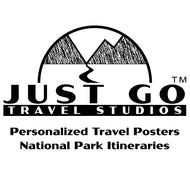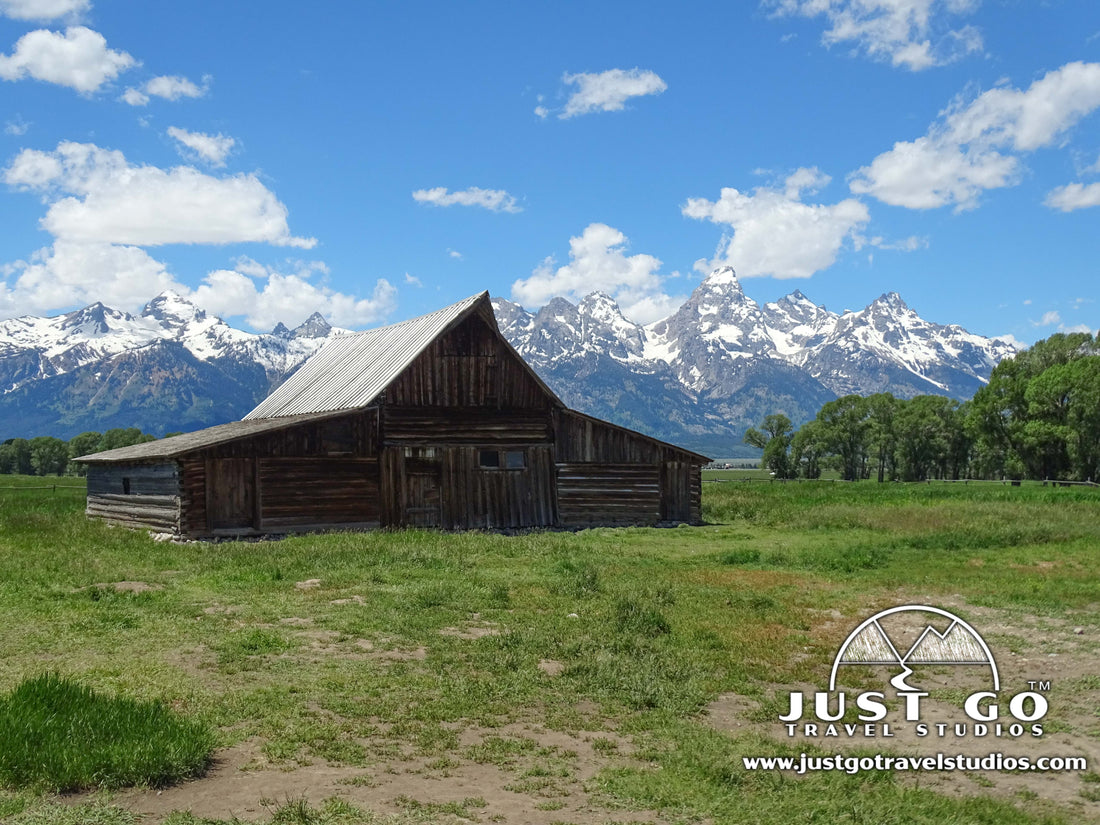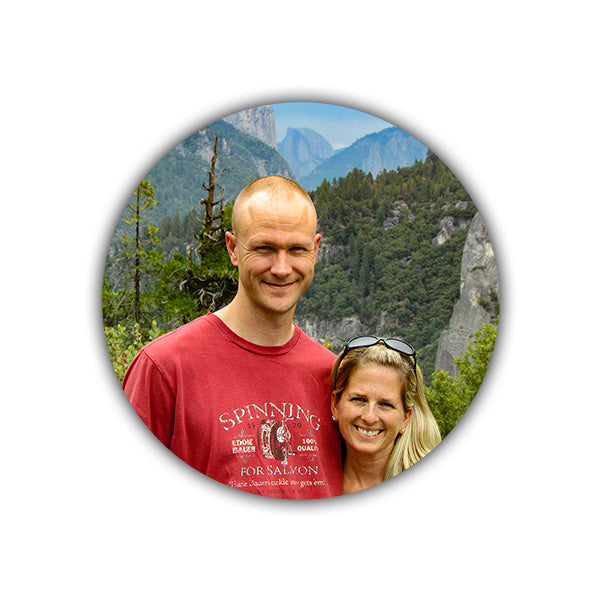Just north of Jackson, WY, Grand Teton National Park contains the “newest” mountains in the Rocky Mountains. These jagged peaks of the Teton range provide a beautiful backdrop to the park, which sits mainly to the east of the peaks. These mountains were formed by a combination of earthquakes and glacial movement. The result of this “work” by nature is numerous canyons, roaring creeks and stunning lakes awaiting exploration.
While Grand Teton draws in over 3 million visitors each year, it is mind boggling how many people just “pass through” on the way to its bigger brother (Yellowstone National Park), which sits just to the north. There is so much to see here, that an adventurous family could easily spend an entire week of exploration and still have things left on their list.
We loved our trip to Grand Teton in 2017 and were so impressed by our experience that we’ve already started sketching out plans to head back.
Here are some tips on how to plan a trip to Grand Teton National Park as well as what to do while you are there.
Grand Teton National Park, including what to do, what to pack, ranked hiking information and useful links are covered in our extensive itinerary for Grand Teton National Park.
Located in the northern part of Grand Teton National Park, Jackson Lake is the largest lake in the park. Covering nearly 15 miles from north to south, Jackson Lake provides a large amount of activities and is also home to most of the park’s lodging. Most visitors spend their time at the areas surrounding Jackson Lodge and Colter Bay Village, but there are also a couple of good hiking trails as well. Plan on spending a full day exploring the area.
While visiting Jackson Lake and the surrounding area, our recommendations include:
- Kayaking and boating. The Tetons provide an incredible backdrop to those that decide to boat on Jackson Lake. The clear (but cold!) lake is calm and usually not too busy. Experiencing the lake by boat is terrific. We recommend the kayak rentals from Signal Mountain Lodge, but you can also rent canoes and larger motorized boats (the latter is quite pricey, though!). Be sure to take your camera out while you are kayaking-you’ll get photos across the water that will likely become some of the best of your trip.

- Visit the Jackson Lake Lodge. This hotel is gorgeous on the outside and inside. It is pricey, but it is free to check out the lodge in between your other adventures. We recommend the huckleberry shakes at the Pioneer Grill, which is inside the lobby. After you order and pick them up at the take-out window, head down and sit in front of the large picture window (or sit outside) as you take in the view. True story-this is what we had for our anniversary dinner while looking at the Tetons. It remains one of our best anniversary “dinners” of all time!


- Colter Bay Visitor Center. While smaller than its counterpart in Moose, WY (the Craig Thomas Discovery and Visitor Center) is worth visiting. Rangers can provide answers to any questions that you may have, and there is a small shop and several displays, including Indian artifacts.
-
Hiking. There are a few hikes around Jackson Lake that are worth checking out. We recommend the following (others are covered in our Grand Teton National Park itinerary):
- The Colter Bay Nature Trail is an easy 2.0-mile hike. After starting at Colter Bay Village the trail follows the Bay shoreline with views of Jackson Lake and the Tetons. There is little elevation gain, which makes this great for families with young children.
- The Lunch Tree Trail is another easy 0.5-mile hike. Starting from the Jackson Lake Lodge, this interpretive trail has wildflowers if you hit the right time of year (late June is best). You can see Willow Flats in the distance and may be able to see a moose or bear if you look closely.
- The Two Ocean Lake Trail is a 6.1-mile, moderately difficult hike that travels around Two Ocean Lake. Starting just north of Pacific Creek Road, the trail gives unique views of the Tetons. We recommend hiking counterclockwise for the best views. Make sure you bring bear and bug spray. The bugs in particular are quite aggressive on this trail. Our favorite bug spray is Squito Ban from Yaya (as it is all natural), but if you prefer something with Deet, then this option from Repel is great. Both are pump sprays, which we prefer.
Located in the southern part of Grand Teton National Park, the Jenny Lake and Leigh Lake Areas are brimming with activity. The roads and hikes can be especially busy as a large number of travelers enter the park from the south (since many stay in Jackson, WY). Don’t let that scare you away, though. This area is busy for a reason!
While you are in the area, here are a few of the places that you’ll want to check out:
- Craig Thomas Discovery and Visitor Center. Located in Moose, this is an impressive Visitor Center and includes a relief map and a store. There are plenty of rangers to help out too, as well as information on campsite vacancies. There is also a video that is quite impressive!

- Mormon Row. There are over 30 standing barns and homes from an early settlement. It is a short drive from Moose and some of the most iconic pictures of the Tetons are taken from this location. Make sure you take some time to walk around here. The pictures are most easily taken in the morning when the sun is at your back. If you don’t arrive in the morning, make sure you arrive before noon so you can see the Tetons without the sun shining in your eyes. While still beautiful, the mountains can look a bit hazy, especially in the late afternoon.


- Kayaking and boating. Jenny Lake is smaller than Jackson Lake, but if you rent kayaks from Jenny Lake Boating, you’ll be able to spend several hours (if not more) exploring it.

- Horseback riding. If you like to ride horses or really experience the back-country while being able to cover more ground in a shorter time than hiking, then this is a great option. Our favorite option is Swift Creek Outfitters. Located just outside the park, the guides are real cowboys and will take you on a trip that you won’t forget, which includes river crossings!

- Fly fishing for trout is popular in the park. Unlike some other parks, a license from the state of Wyoming is required in Grand Teton National Park. Details on what you can expect to catch (and other rules) can be found here. Rental fishing gear is available at Snake River Angler.
- Whitewater rafting. Rafting and float trips are available from Jackson on the Snake River. They include a one-way bus ride and take from one to several hours. The rapids can be pretty intense during the spring and early summer, so we highly advise taking a guided tour (it’s not rare to hear of fatal accidents from people rafting on their own). Two of the guided services include Barker-Ewing White Water and Mad River.
-
Hiking. While the lakes are smaller than Jackson Lake, there are many more hiking trails down near Jenny and Leigh Lakes. We recommend the following (though many more are covered in our Grand Teton National Park Itinerary):
- The Cascade Canyon trail is a moderate to difficulty 9.3-mile hike (but you can cut it shorter if desired). Starting from the shore across Jenny Lake (the boat ride that leaves from the Boat Launch area drastically cuts down on the hiking time and allows you to have more time on the trail), this is the top-rated hike in Grand Teton. We recommend hiking to Hidden Falls first, then up to Inspiration Point (1.2 miles one-way, 2.4 round trip) before heading directly into Cascade Canyon. This diversion only adds a small distance (0.5 mile max) to the Cascade Canyon hike. The hike starts off steep through the woods, but it flattens out as you get into the Canyon. Keep an eye out for moose and bear inside the Canyon. We covered this trail in detail in our blog post on hiking the Cascade Canyon trail.

- The Hidden Falls Trail is a fairly easy 1.0-mile hike. Starting from the boat landing across Jenny Lake, this popular trail leads up the side of a riverbed on the way up to a 200-foot cascade. The mist from the trail cools you down on a hot day!

- The Taggart Lake Trail is a moderately challenging 3.0-mile hike that starts west of Moose Junction (by 3.5 miles). This is one of the most scenic hikes at Grand Teton National Park, featuring a gorgeous view of the Tetons reflecting in Taggart Lake. We covered this hike in detail in our blog on hiking the Taggart Lake Trail.

- The Leigh Lake Trail is a moderate 1.8-mile hike. Starting alongside the shores of String Lake, the hike moves along String Lake and is quite beautiful, particularly in the morning. The trail eventually meets up with Leigh Lake. The bridge between the two lakes is a cool place to hang out if you want to relax with the water flowing below your feet. If you want, you can keep hiking up to 7 miles on this trail. The hike along String Lake can be busy since it’s a popular spot for people to come in for the day and relax on the shoreline.


42-MILE SCENIC LOOP ROAD
Starting in the south, this loop includes the Teton Park Road, which travels along the base of the Tetons before returning on Highway 191 through Antelope Flats, which includes a ton of wildlife (or you can do it in reverse).
Along the route, there are a bunch of stops that you won’t want to miss. The stops that we found most impressive include the following:
- Schwabacher Landing. Located on highway 191 about 3 miles north of Moose, this is a boat landing along the Snake River. There is a rough road down to landing; walk both trails to the water to get some great photos.

- Snake River Overlook. Located on highway 191 about 4 miles north of Moose, this is a great photo spot, though the sun can wash out photos in the afternoon and before the sun sets.

- Willow Flats Overlook. On Highway 191 just south of Jackson, this is a good spot to potentially see grizzly bears feeding. Traffic jams in this area are common due to the wildlife.

- Oxbow Bend. This turnout is located a mile east of Jackson Lake Junction and is one of the most photographed spots in the park. It is especially great to visit in the morning while the sun is at your back as you look at the Tetons.

WHERE TO STAY IN AND AROUND GRAND TETON NATIONAL PARK
- Staying in Grand Teton National Park isn’t a must, but it certainly adds to a trip to be fully immersed in the park for a few days without having to leave. The Jackson Lake Lodge is the highest end resort, but other places to stay include the Jenny Lake Lodge and the Colter Bay Village.
- Jackson, WY is just outside of the park to the south. Since Grand Teton isn’t as large as its neighboring park to the north, staying outside the park is definitely a viable option without killing your day with commuting into and out of the park. Jackson is also a great destination by itself for shopping and dining in the summer and skiing in the winter.

- Several campgrounds are available, and reservations are recommended if possible, but they are only available at the Headwaters Campground at Flag Ranch (unless you have more than 10 people). It’s common for the sites to fill up by 9:00 AM, so make sure you get there early!
Wherever you decide to stay, try to book your reservations a full year in advance for the best chance of staying where you want (especially if you have a large family!). If you can’t find lodging, be persistent and keep checking back to see if there are cancellations.
HOW TO GET TO GRAND TETON NATIONAL PARK, WHEN TO GO AND WHAT TO EXPECT
Without a doubt, the best airport to fly to when heading to Grand Teton National Park is Jackson Hole, WY. This airport is small, but it’s between the town and the park and in a perfect location. Large carriers, including United, American and Delta, all fly into Jackson Hole from their major hubs. Be advised, though, that flights are usually quite expensive. Other options include Idaho Falls, ID and Pocatello, ID as well Salt Lake City, UT. Salt Lake City is about 5 hours away by car, so be ready for a drive (though it is a beautiful one)!
Grand Teton is open year-round, with attendance peaking in July. The summery crowds start showing up in May and die down toward the end of September as the temperatures turn colder. Fall is a beautiful time of year, without a doubt.
Temperatures are moderate, with peak highs in the summer only reaching an average of 72 degrees. Nights are typically cool, even in the summer (averaging 40 degrees). Wintertime temperatures are very cold, with temperatures rarely going above freezing between December and February.
FURTHER INFORMATION ON GRAND TETON NATIONAL PARK FROM JUST GO TRAVEL STUDIOS
- What to do in Grand Teton National Park, what to pack, details on the information included in this blog and much more are covered in our 14+ page itinerary for Grand Teton National Park.
- A terrific hike for families is the 3.9-mile hike to Taggart Lake, which is covered in our Taggart Lake (with Beaver Creek Loop) blog.
- The Cascade Canyon Trail (with Hidden Falls and Inspiration Point) Trail was covered in another blog-you’ll want to make sure you check out what we experienced there!
- For tips on the 5 Best Day Hikes in Grand Teton National Park, check out our article!
- Our son wrote up a blog post on Grand Teton in 2017, as it was one of his favorite parks. He has an interesting perspective that he’d love to share with you!
- For information on what to pack as you prepare for your trip to Grand Teton National Park, see our post on Grand Teton – What to Pack.
- When you get back from your trip, either here or any beautiful location, send us one or more of your photos and we’ll work with you to make one of our unique, custom, vintage-style travel posters. We’ve served up thousands of these to customers and would love to work with you!
OTHER USEFUL INFORMATION ON GRAND TETON NATIONAL PARK AND THE SURROUNDING AREA
- The National Park Service has a great website on Grand Teton National Park. It is a wealth of information. Be advised, though, that cell service in the park is very limited, so make sure you do your planning ahead and get all you need before you leave!
- For great tips on where to go and how to take great pictures within Grand Teton National Park, PhotoJeepers has a great article.
- Oh Ranger! covers the 42 mile scenic loop in great detail on their site.
- Bears are frequently found in Grand Teton National Park and you need to make sure you bring bear spray with you just in case.
- While we were visiting Jackson, WY, we ate out in town only two times. Both times were at Snake River Brewing. We honestly didn't even have any beer, though we hear it's amazing. The food here was just what we needed after exploring the park and needing to refuel. We can't recommend this place enough!
FINAL THOUGHTS
We are big fans of Grand Teton National Park, but we are sure that you figured that out by now!
If you have been to Grand Teton National Park and have favorite information not covered in our post, be sure to leave a comment! We’re also more than happy to answer any questions that you might have. Don’t be afraid to email us directly!





